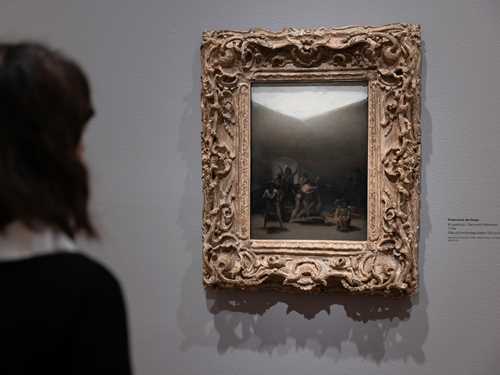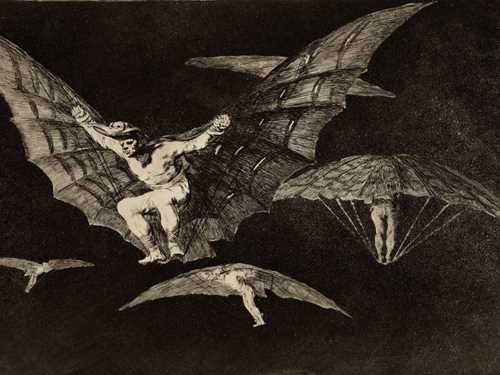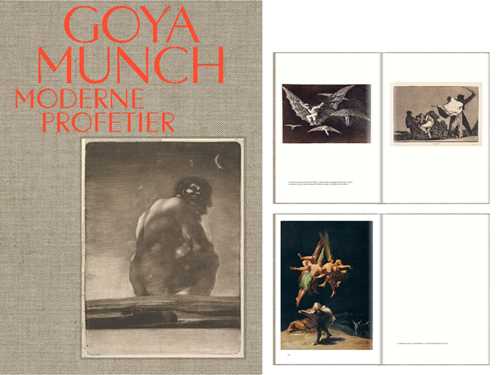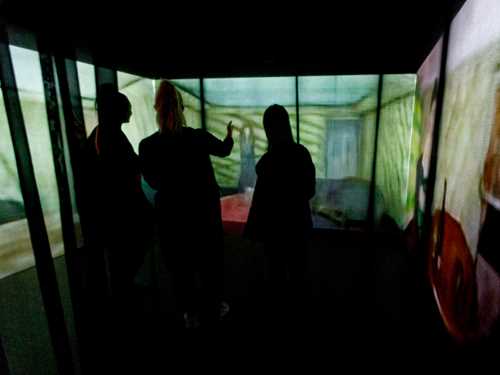Visiting Darkness: How we enhance the atmosphere for an unforgettable museum experience
How can we make your encounter with art even more powerful and memorable? Here, MUNCH’s Concept Developer Nikita Mathias reveals how we’ve been sculpting the atmosphere and worked with storytelling in our exhibition Goya and Munch: Modern Prophecies.

From the exhibition GOYA AND MUNCH: MODERN PROPHECIES (28.10.2023 – 11.02.2024) Photo © Munchmuseet
Nikita Mathias, MUNCH
When trying to engage a group of visitors with art, you first need to know what they want. Our own research tells us that many people feel outside their comfort zone in an art museum. They may not feel knowledgeable enough to ‘get it’. They may not know what they are looking at, or what to think about what they have seen. Or they may feel overwhelmed by a wall text explaining the art that uses academic or inaccessible language.
Storytelling and atmosphere can be a huge help here. When an exhibition tells stories many people can relate to rather than only listing objective facts, it is no longer about getting things right or wrong. When it adds atmospheric and immersive design that relates to the artworks in a meaningful way, visitors know where to focus their attention because they and the art inhabit the same world.
Here, I will share how we have tried to help you experience the art in the exhibition Goya and Munch: Modern Prophecies in a meaningful, emotional and accessible way.
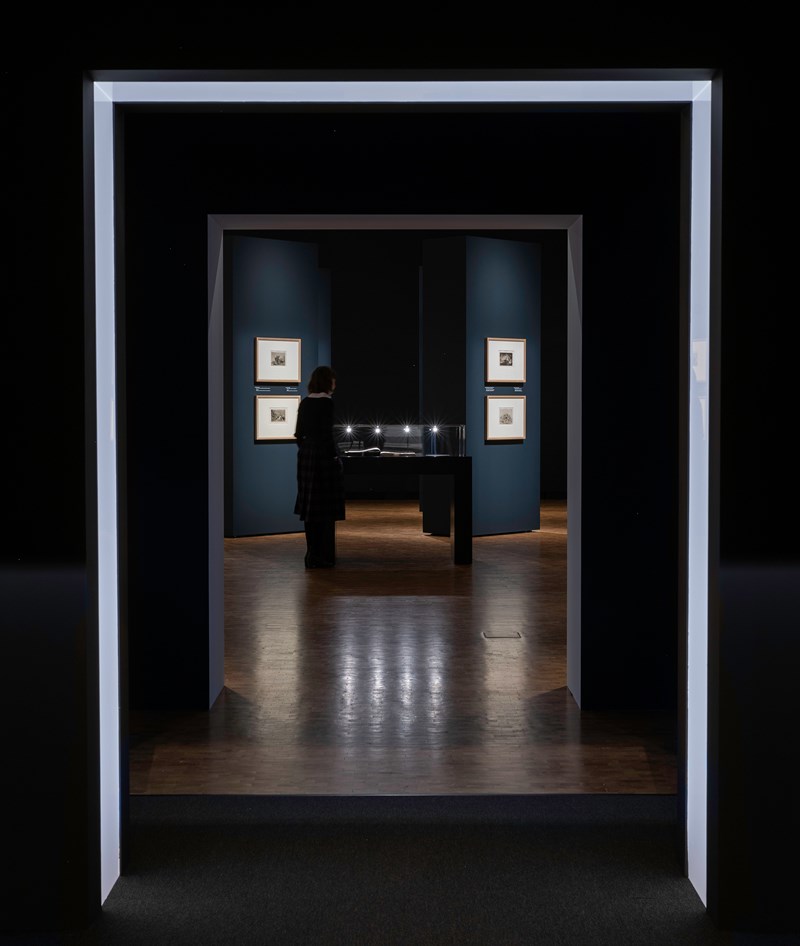
Grand, Timeless, Biblical
The design of Goya and Munch: Modern Prophecies is deeply rooted in its main themes and the subject matter of the artworks. Through a selection of works by Francisco de Goya and Edvard Munch, the exhibition deals with the topics of Society, War and Faith. While the Society section focuses on Goya’s and Munch’s depictions of poverty, hardships, and the fates of beggars, workers, and the mentally ill, the War section is about the horrors, bloodshed, and tragedies brought about by disastrous conflicts. The final section, ‘The Empty Cross’, encompasses perspectives on religion and superstition, unconventional references to Christian themes as well as supernatural creatures and events.
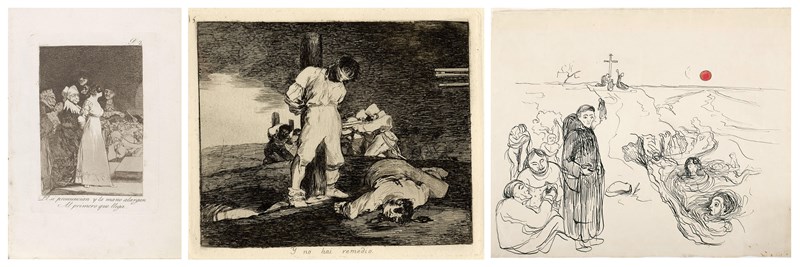
Left: Francisco de Goya, They say yes and give their hand to the first comer, 1797-99 / 1799 (trykk) (No. 2 The Caprices). Middle: Francisco de Goya, And there's nothing to be done, ca. 1810-15 (No. 15 The Disasters of War). Right: Edvard Munch, The Empty Cross, 1899-1900.
In the exhibition team, we interpreted these three themes as monumental and timeless. There is something ‘biblical’ about their eternal relevance and their scope, which captures something essential about the human condition. In addition, many of the artworks themselves are best described as drastic, dark and unsettling. This is why we imagined the visitor experience as an atmospheric and immersive journey into the dark sides of Goya’s and Munch’s artistic output. This journey would be presented as one cohesive narrative in which the themes organically unfold one after another.
Atmospheric Architecture
The architects for the exhibition were Nissen Richards Studio from London. They translated our ideas into three monumental spaces, one for each theme. They also developed the journey through the space as a movement through different states of darkness and light. This was achieved through the wall colours, the lighting in the space, and the alternation of narrow passages and wide rooms.
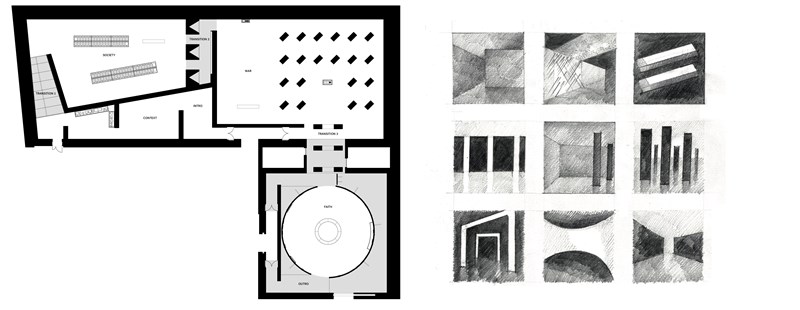
Left: Floor plans of the exhibition, with the three main rooms. Right: Early sketches. © Nissen Richards Studio
The passageways where visitors pass between the larger gallery spaces became an important element in the experience design. There are three of these ‘transition spaces’ in the exhibition: one leading into the Society section, one into the War room, and the final one before the Faith chamber. These passageways are intended to prepare visitors for the art they are about to discover in the next room. Here, the atmospheric effects of light and darkness and the idea of an immersive exhibition journey are taken to more extreme levels. Shrouded in darkness and accentuated by light effects, the transitions should give visitors a more emotional and intuitive experience of Goya’s and Munch’s art.
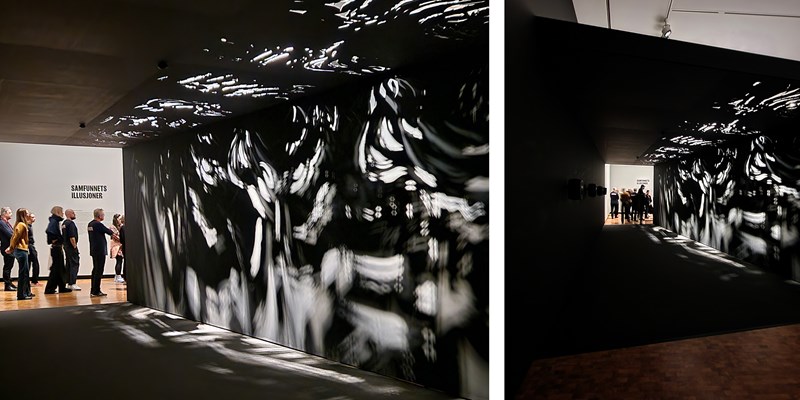
Photo © Munchmuseet
The intense atmospheres in the transitions are also reinforced through abstract and unsettling soundscapes created by the highly regarded British sound designer Carolyn Downing.
Building Darkness
The process of getting from the first ideas to the final exhibition is fascinating, complex and intense, involving a variety of experts and fields. How can you be sure that an idea you might have about a piece of exhibition architecture actually works in the end?
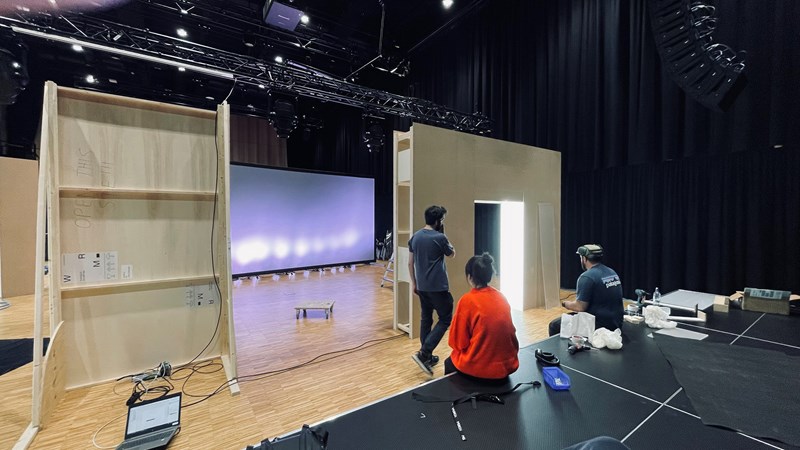
Photo © Munchmuseet
With exhibitions as ambitious as Goya and Munch, one key factor is to build prototypes and test along the way. That is why we built a number of simple prototypes of different parts of the exhibition to see how they work in themselves and in relation to one another. What happens when you shoot light through carved-out shapes in a wooden ceiling? How do speakers need to be placed to enable a good sound experience for wheelchair users? And what kind of materials can be used to stop sound leaking out into the spaces where the artworks are? These are just three of many more questions we tried to answer by means of testing during the process.
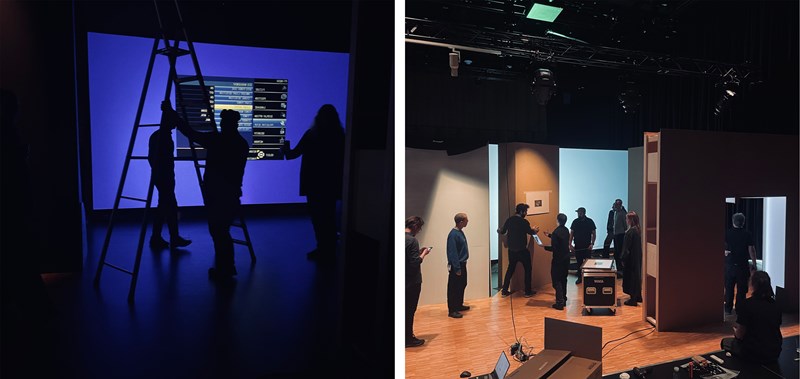
Photo © Munchmuseet
Goya and Munch: Modern Prophecies is on display at MUNCH, 3rd floor, 28.10.2023 – 11.02.2024
Did We Succeed?
Have you already seen the exhibition? If so, do you think we were successful with our goals for the visitor experience – giving you enough information to enjoy and understand the exhibition while also creating an atmosphere where you felt you had enough time to experience the extraordinary art of Goya and Munch?
Your input is vital for us to continue building the best possible exhibitions and experiences. Pay us a visit and take a few brief moments to fill in our feedback form.
